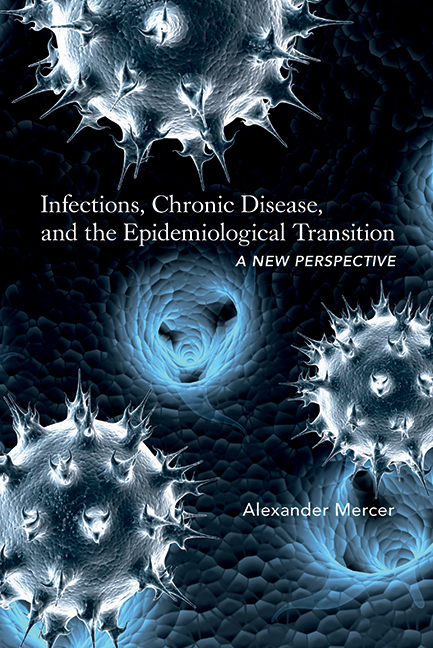Book contents
- Frontmatter
- Dedication
- Contents
- Preface
- Acknowledgments
- Introduction
- 1 Background
- 2 Theoretical Framework, Data, and Study Outline: The Concept of Epidemiological Transition
- 3 A New Infectious Disease Environment
- 4 Mortality Decline, Food, and Population Growth: “Standard of Living” and Nutrition
- 5 Smallpox
- 6 Typhus, Typhoid, Cholera, Diarrhea, and Dysentery
- 7 Infant Mortality
- 8 Child Mortality
- 9 Tuberculosis
- 10 Respiratory Diseases
- 11 Cardiovascular Disease
- 12 Cancer
- 13 Other Chronic Diseases
- 14 Epidemiological Transition: A New Perspective
- Appendixes
9 - Tuberculosis
Published online by Cambridge University Press: 14 March 2018
- Frontmatter
- Dedication
- Contents
- Preface
- Acknowledgments
- Introduction
- 1 Background
- 2 Theoretical Framework, Data, and Study Outline: The Concept of Epidemiological Transition
- 3 A New Infectious Disease Environment
- 4 Mortality Decline, Food, and Population Growth: “Standard of Living” and Nutrition
- 5 Smallpox
- 6 Typhus, Typhoid, Cholera, Diarrhea, and Dysentery
- 7 Infant Mortality
- 8 Child Mortality
- 9 Tuberculosis
- 10 Respiratory Diseases
- 11 Cardiovascular Disease
- 12 Cancer
- 13 Other Chronic Diseases
- 14 Epidemiological Transition: A New Perspective
- Appendixes
Summary
Death rates from different acute infectious diseases began to decline at different times in the 18th and 19th centuries, reflecting the relative success of different preventive interventions and other factors. While major killers such as smallpox, typhus, cholera, and typhoid had been nearly eliminated by the end of the 19th century, measles and respiratory disease death rates did not decline. The lack of decline in death rates from respiratory disease in the second half of the 19th century (see chapter 10) contrasts with the decline in death rates from the chronic infectious disease respiratory tuberculosis considered here. This highly visible wasting disease was endemic in London by the 17th century. The death rate from “consumption” recorded in the London Bills of Mortality increased up to the 1740s, leveled off, and then declined after 1800. Because death rates from some other causes declined, “consumption” accounted for an increasing proportion of all deaths, 14% in 1700–49 and 22% in 1750–99. The term “consumption” probably referred to many “wasting” conditions, and Black noted at the time that it was “lax and indefinite” and included many types of emaciation. Deaths from lung diseases other than tuberculosis, such as bronchitis, may have been included, while some deaths involving respiratory conditions were recorded as “asthma.” Even so, in the experience of Black and contemporary physicians, a very large proportion of “consumption” deaths in the 18th century were due to pulmonary phthisis, a term used for respiratory tuberculosis. In the 19th century, tuberculosis became a major public health problem exacerbated by rapid population growth in the towns, and it caused much longterm sickness and death, particularly among adults.
Under national registration, other nonrespiratory forms of tuberculosis were recorded separately, including infection of lymph nodes in the neck (scrofula) and abdomen (tabes mesenterica), and tubercular meningitis. There could have been some transfer of recording between phthisis and these categories as well as transfers-in from vague categories such as “atrophy,” which may have included some people wasted by tuberculosis.4 There were probably some transfers between phthisis and the respiratory disease category in the early years of national registration, although the decline of 34% in the death rate from phthisis between 1838 and 1850 is likely to reflect some genuine decline in respiratory tuberculosis mortality.
- Type
- Chapter
- Information
- Infections, Chronic Disease, and the Epidemiological TransitionA New Perspective, pp. 118 - 130Publisher: Boydell & BrewerPrint publication year: 2014

